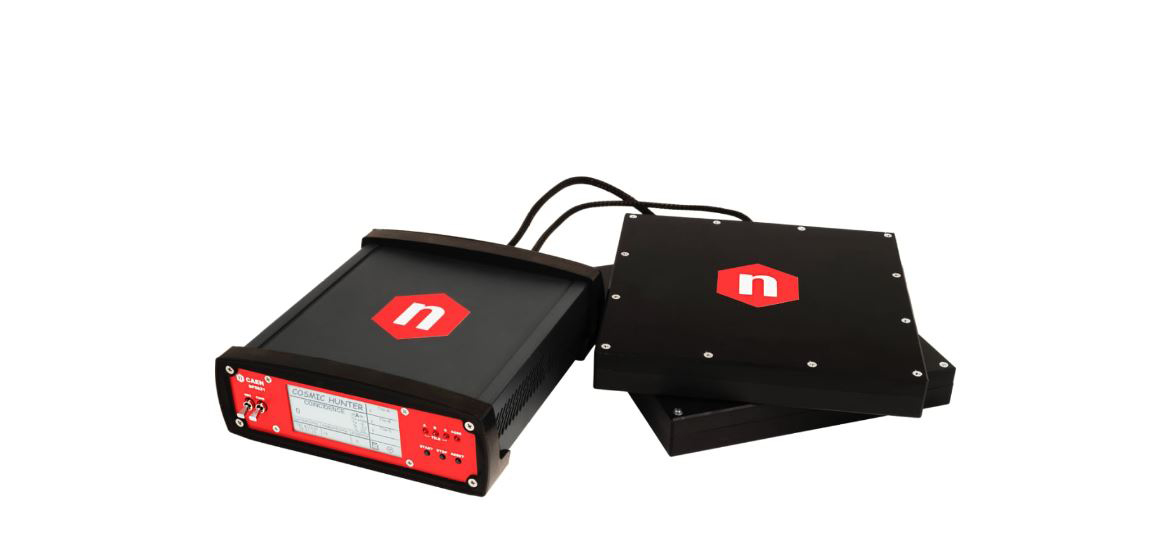| Difficult | Execution Time | Data Analysis | Radioactive Sources |
|---|---|---|---|
| Yes | No |
Equipment: SP5620CH – Cosmic Hunter
| Model | SP5621 | SP5622 (x2) |
|---|---|---|
| Description | Coincidence Module | Detection System |
Requirements
A large iron or lead tile is strongly suggested.
Purpose of the experiment
To estimate the contribution of environmental radiation during the detection of the cosmic radiation.
Fundamentals
Natural radiation is composed of two components: Environmental (primarily derived from soil, but also water, air and food) and Cosmic radiation. Gamma rays coming from soil will have mean energy lower than 2 MeV and will descend from the decay chains of three natural radioactive elements: Potassium [40 K], Thorium [232 Th] and Uranium [238 U]. However, there is a not null probability that a soil-derived gamma interacts with the scintillating tile and deposits 1 MeV of energy. This potential could cause confusion or inaccuracies in cosmic rays counting measurement. However, the high threshold of the electronics and the low probability of this phenomenon, when compared to the cosmic ray high detection probability, should typically avoid this inconvenient situation.

Experimental setup block diagram
Carrying out the experiment
- Connect the cable connectors of the two SP5622 to the tile inputs located on the rear panel of the SP5621 module.
- Power on the SP5621 module and start the acquisition via the front panel START button. When a charged particle crosses the black tile it’s energy is converted into scintillation light. The photons which are produced are detected by the photosensor and converted into an electrical signal. The number of counts for each scintillator may be viewed via the SP5621 display.
- Select double scintillators coincidence mode via the related button on the front panel, and then select measurement integration time.
- Before beginning acquisition the geometry of the system must be determined. Be sure to keep this geometry for the duration of the experiment. To get acquainted with environmental radiation detected by the Cosmic Hunter place the system over bare soil and record data.
- Once complete, place the detectors a few meters above bare soil and place an iron or lead shield between the soil and the tiles.
- Acquire the data again with identical tile geometry and compare the results.
Results
Students may become acquainted with the presence of natural radioactivity by identifying environmental and cosmic contributions via simple comparison of the counting measurements at different heights.

Comparison between the count rates of the measurements acquired on soil and again 1 meter above soil. The comparison plot demonstrates that the parameter settings (Bias Voltage and Threshold) are such that cosmic ray detection is not affected by environmental radiation.


